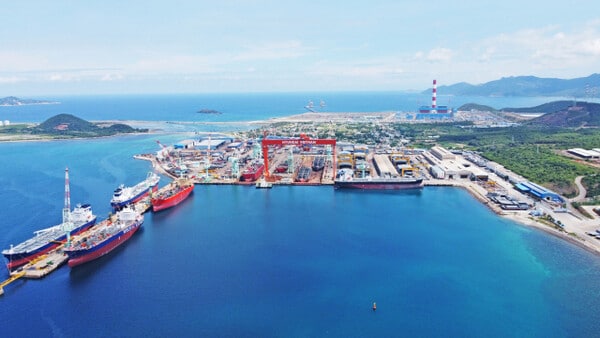South Korea’s Shipbuilding Workforce Sees Modest Growth

South Korea’s shipbuilding industry is witnessing a significant shift in its workforce dynamics. For the first time in nearly a decade, the sector has reported an increase in its workforce numbers. This change comes after years of decline and is largely driven by an influx of foreign workers. Despite the positive trend, the industry still faces challenges, particularly in filling skilled positions. Government initiatives aimed at attracting foreign labor have provided some relief, but the demand for skilled personnel remains high.
Workforce Recovery Amid Challenges
According to recent data from the Ministry of Trade, Industry and Energy, the number of technical workers in South Korea’s shipbuilding sector rose to 58,528 by the end of 2023. This represents a modest 0.8% increase from the previous year, when the workforce numbered 58,042. This uptick is noteworthy, especially considering the workforce had plummeted from 69,766 in 2014 to its lowest point in nearly a decade. The recovery is a positive sign for an industry that has struggled since the downturn in the 2010s.
The increase in workforce numbers is primarily attributed to a surge in foreign workers. The number of foreign technical staff in the shipbuilding sector nearly tripled, jumping from 877 in 2022 to 2,563 in 2023. This influx has raised their share of the total workforce from 1.5% to 4.4%. While this growth is encouraging, industry representatives caution that it is still insufficient to meet the current workload demands. Many skilled workers who left the industry during the downturn have not returned, leaving a gap that foreign labor alone cannot fill.
Negotiations between Indian Ports Association and labor unions start
Government Initiatives to Attract Foreign Labor
To combat the ongoing labor shortages, the South Korean government has implemented several initiatives aimed at attracting foreign workers to the shipbuilding industry. One of the key measures is the expansion of the Skilled Worker Points System Visa (E-7-4) program. In 2023, the government allocated an additional 400 visas specifically for the shipbuilding sector. This move is designed to streamline the process for foreign workers seeking employment in the industry.
Visa processing times have been significantly reduced, going from five weeks to just 10 days. Additionally, the cap on foreign workers per company has been temporarily raised from 20% to 30% of the domestic workforce for a two-year period. This change aims to encourage companies to hire more foreign labor to fill critical roles. Furthermore, the requirement for foreign welders to submit work experience certificates has been waived during this time, further easing the path for skilled workers to enter the industry.
Despite these efforts, industry representatives express concern that the number of foreign workers is still not enough to meet the growing demand. The overall technical workforce in South Korea reached 1.71 million by the end of 2023, marking a 1% increase from the previous year. However, the labor shortage has also intensified, with unfilled positions rising by 1.9% year-on-year to 39,190. As the shipbuilding industry continues to recover, addressing these labor shortages will be crucial for sustaining its growth and competitiveness in the global market.
